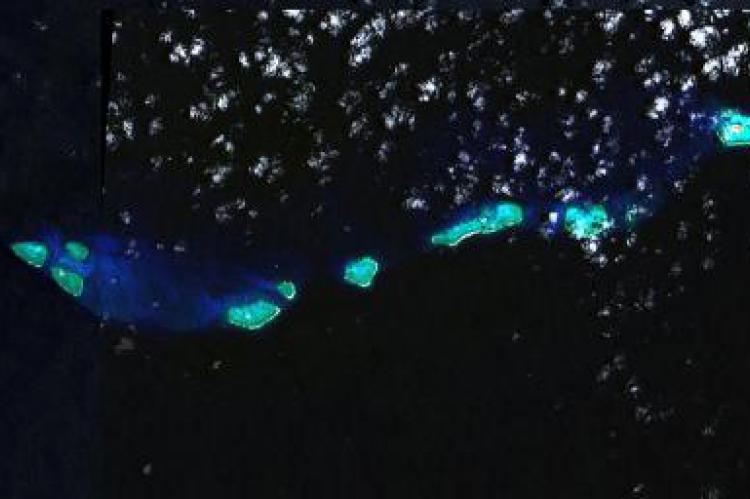Wrecks from colonial era located on Great Barrier Reef
The wreck of a British cargo ship that sank while sailing in convoy with Matthew Flinders 200 years ago has been discovered off the Australian coast.
Maritime archaeologists made the claim last week after discovering a ship's cannon embedded in a reef in the Coral Sea off North Queensland. It is thought to belong to the Cato, which sank in the area after running aground in 1803 on its way to India.
Expedition leader Kieran Hosty, of the National Maritime Museum, said it was significant to Australia's maritime history. "Very few colonial trading vessels have been found in Australian waters; this is just one of a handful," he said.
HMS Cato was a wooden vessel of 430 tons, built in Stockton, England. Under the command of Captain John Park she left Sydney 10 August 1803, bound for Bombay or China, in company with HMS Porpoise and ship Bridgewater.
HMS Cato and HMS Porpoise were wrecked after hitting an uncharted coral reef now known as Wreck Reef, Great Barrier Reef, at midnight on August 17, 1803.
For reasons never satisfactorily explained the Bridgewater made little effort to rescue them and later reported both lost with no survivors. Crew eventually rescued by the ship Rolla and the schooner Cumberland.
Three young sailors drowned, while the survivors, including captain Matthew Flinders which was aboard the Porpoise, clambered on to Porpoise Cay. The shipwrecked sailors built a small open boat they named Hope from the timbers of the Porpoise.
Captain Matthew Flinders RN (16 March 1774 – 19 July 1814) was one of the most successful navigators and cartographers of his age. In a career that spanned just over twenty years, he sailed with Captain William Bligh, circumnavigated Australia and encouraged the use of that name for the continent.
Flinders and a crew of 13 navigated the Porpoise's cutter across more than 1200 kilometres of open sea back to Sydney, and arranged for the rescue of the remaining marooned crew. The stranded sailors on Porpoise Cay, including Flinders's brother, were picked up six weeks after the ordeal began.
Difficult conditions
Five expeditions had visited the coral outcrop, known as Wreck Reef, in the past 45 years but failed to find where the Cato went down.
For the first time, vital clues are expected to be unearthed near the small island of Porpoise Cay.
Kieran Hosty said conditions for the men would have been difficult. "The island is not even 100 metres long and less then 40 metres wide, so it must have been quite crammed for the 90 survivors," he told the The Sydney Morning Herald.
Although the discovery of the ship's cannon has been a major find, Mr Hosty believes the final proof of identity will be made from the hinge of the ship's rudder which was located nearby.
"We didn't want to damage the reef by lifting the heavily coral-encrusted cannon, so we were thrilled to retrieve the rudder's hinge yesterday," he added.


